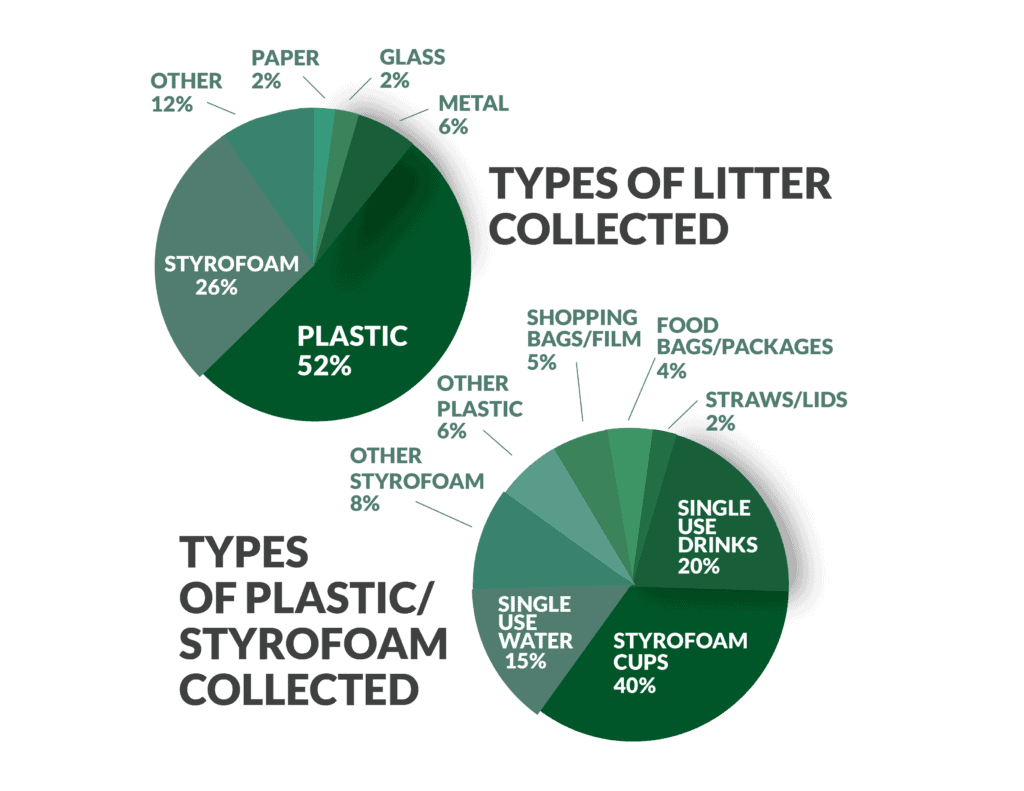Click any marked location on the map to learn more. You can view an image of the litter collection device in action, the date it was installed, and data totals for the litter collected and recycled so far!
The data for each site is updated quarterly.
The red map pins show active Litter Gitter sites.
The yellow map pins show active sites of all other Litter Collection Devices.
The gray map pins show inactive collection sites.
The blue map pins show where you will see litter collection sites in the near future!
Osprey is based out of Mobile, Alabama
The outlined and shaded area represents tactical cleanups.
Osprey owner and founder Don Bates grew up exploring the ditches and swamps of Hammond, Louisiana with his brother Kiley. Back then, osprey sightings were rare due to the toxic effects of DDT–but there was always an osprey nest at the Bates family camp in Manchac, Louisiana.
Read more about the Osprey Initiative name and our challenge to ourselves and our partners.
The patented Litter Gitter is a tactical, small stream litter collection device used to intercept floating litter from stormwater runoff. Osprey Initiative utilizes these devices to intercept litter closer to the source, preventing its flow further downstream.
Initial tests indicate a 80+% success rate in preventing the downstream loss of floating litter. Osprey collects this data to create tailored solutions, while also handling all aspects of installing and maintaining the Litter Gitter.
Our patented Litter Gitter devices are available as a package that includes operation and maintenance services. The Osprey team handles all aspects of handling and maintaining the Litter Gitter. Included with the purchase of the device is data collection to determine the source and efficient means to remedy litter issues. All of these services are included with the price of the Litter Gitter device.
Minimizing our footprint in nature is our top priority. At many of our sites, we have worked to obtain permits with the U.S. Army Corps of Engineers that clear threats to wildlife. We also work with the local authorities in that specific area to answer questions and ensure there are no impacts to local wildlife.
YES! Osprey Initiative can perform parts or all of the plan to help you achieve your goals. Our solutions are tailored to that community or watershed’s specific needs, vision and resources.
Our services include tactical clean-ups, debris removal, data collection, permitting assistance, plans for long term abatement in your watershed, and more. We can also facilitate specialty material handling for recycling or whatever your concerns may be.
Osprey Initiative breaks down data in ways that help identify sources and solutions of the litter issues. We start by categorizing the major type of litter collected. The next levels of data collection include breaking down major types (listing the different types of plastic collected), condition (the age of the litter), and even labeling (any brands associated with the litter). See the below graphs for an example:
The great thing about our data collection is that we tailor it to your requirements. If aluminum cans are a major concern in your area, we can tailor our data to this type of litter in order to create custom environmental solutions.

Absolutely! We work with the local Materials Recovery Facility (MRF) in each area to get as much of the materials we recover into the recycling stream. All items collected are tagged and included in the data we record at each site. Our mission is to maximize further use of the materials we collect.
Our current data shows that we are recycling between 30 and 40% of the volume of the materials we collect.
(251) 525-9727
© 2024 All rights Reserved.